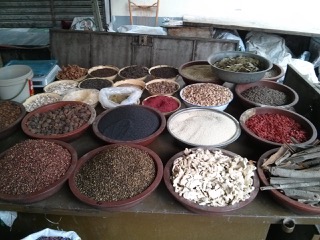Roots, Fruits, Seeds, and Resins: The Formulas and Drugs that Traveled the Silk Road

As drugs were carried along the Silk Road, many of them were gradually absorbed into Chinese medicine. Plant parts and preparations have been absorbed into Chinese medical literature from Central and South Asia as well as further west from North Africa and the Mediterranean. While Chinese materia medica provide a snapshot in time and space of known drugs, by looking widely at formularies, histories, trade manuals, religious texts, and archeological discoveries we can piece together the details of these trans-regional exchanges. By examining several well-known, and a few obscure, plants of foreign origin found in Chinese medical literature, we can better understand the complex relationship between these different medical systems and examine how Chinese medicine was able to integrate the information from various sources and incorporate these drugs into Chinese medicine practice.
Sean Bradley is a licensed Naturopathic Physician and practitioner of Chinese medicine. He owns and manages a private medical clinic, Insight Natural Medicine, where he focuses on sports medicine with both amateur and professional athletes. His research focus is early Chinese medical literature and formularies with a special interest in the transfer of medicines along the Silk Road. He received his doctorate in Asian Languages and Literature from the University of Washington in 2022. Prior to his doctoral work, Bradley received clinical degrees in Naturopathic medicine (ND) and Acupuncture and Oriental medicine (MSAOM) from Bastyr University after completing an intensive study program at the Shanghai University of Traditional Chinese Medicine. He also studied Chinese language and literature (MA and BA) at the University of Washington, and botany (BS) at Colorado State University. Bradley travels often to further his studies and continue to research the use of ancient medicines in modern practice.

